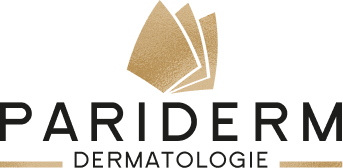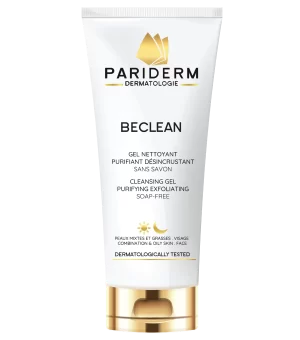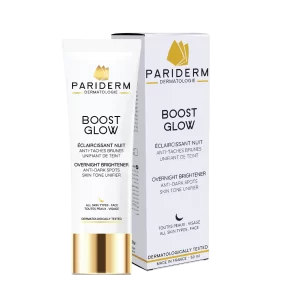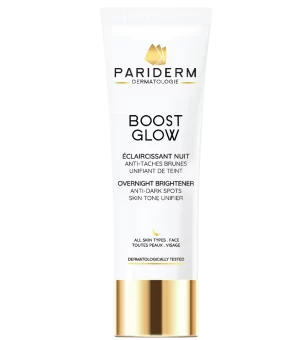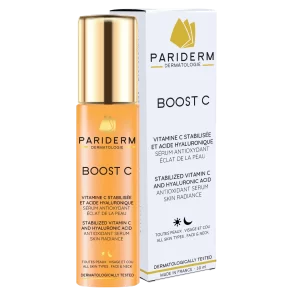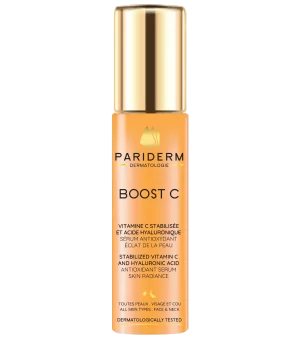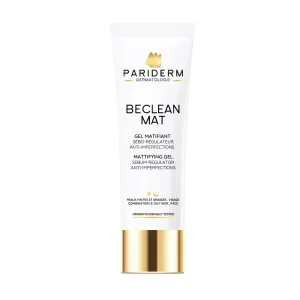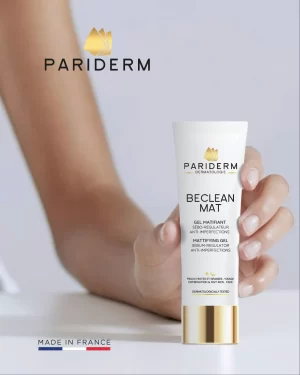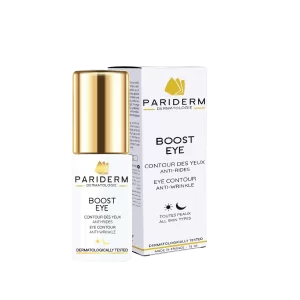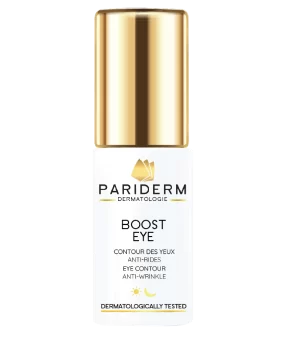How to improve skin hydration?
- By reducing water evaporation as much as possible and repairing the integrity of the skin barrier. HYDRA PLUMP provides the optimal hydration for your skin by combining both HMW HA and LMW HA into one product
- Stay hydrated by drinking at least 1.5 liters of water per day (unless otherwise advised by your doctor)
- Maintain a healthy indoor atmosphere by avoiding air-conditioned (due to dry air) or extremely heated (due to hot air) rooms that accelerate evaporation
- Avoid exposing your skin to intense cold or the harmful effects of UV rays or protect yourself when faced with these conditions by using a humidifier or a sunscreen
- Wash your face twice a day, in the morning to get rid of the excess sebum secreted by your skin during the night and in the evening to remove oils and toxins that adhere to your skin from the outside environment
- Wash your face with a non-aggressive cleanser to remove the oils and keep your skin hydrated. BECLEAN maintains the correct hydration levels for combination and oily skin
- Apply an emollient to repair and protect the skin barrier and reduce tightness
- Choose skin-friendly skin care products and use rehydrating, non-detergent cleansers
- Consult your dermatologist, physician or pharmacist to choose the right product for your skin. If, after using a cosmetic product, your condition does not improve or gets worse, consult your dermatologist or pharmacist
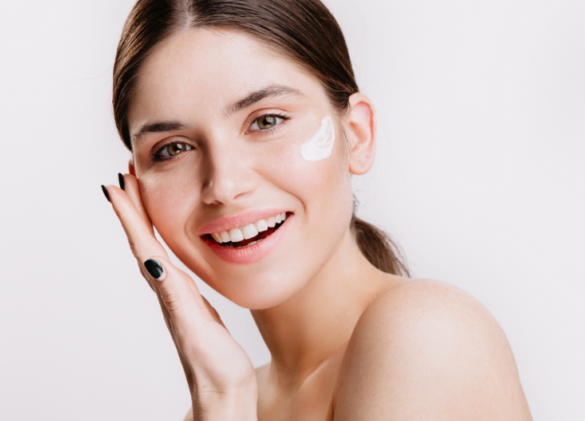
Dehydrated skin, as the name suggests is a condition when the skin lacks water.
Under these conditions, it can no longer fulfill its function as a protective barrier against external aggressions and faces greater difficulties to mechanical movement like stretching and tugging. Thus, small wrinkles begin to appear. Moreover, the skin will look dull and flaky. These symptoms go away as soon as the skin’s hydration levels are restored.
It should be noted that there is a clear difference between dehydrated skin and dry skin.
A quick way to determine if your skin is dehydrated is the pinch test: pinch your skin and see if it takes a relatively long time to return to its original shape. If that is the case, it is dehydrated.
Other tell-tale signs that your skin is dehydrated can be found all across the body such as a dry mouth, dry lips, bulging eyes and general fatigue.
To treat skin dehydration, we must first understand why the skin is dehydrated in the first place.
Approximately 65% of an adult’s total body weight is water and of that total water weight, 15% is present in the skin. Water therefore plays an essential role in maintaining the skin’s health.
The skin, which covers the entire human body, acts as a reservoir which other organs rely on for their water needs. It allows for interaction between the body and the external environment as water moves from the dermis to the surface of the skin where it is lost in the form of water vapor or sweating. This flow of water is called transepidermal water loss (TEWL).
Under normal circumstances, this process is protected by a hydrolipidic film on the stratum corneum (outermost layer of the epidermis) that slows down the evaporation process: this is the physiological barrier. If there is a problem with this physiological barrier, water loss through evaporation accelerates, making the skin excessively dry.
In addition to an inherent problem with the hydrolipidic layer, other external factors can cause dehydration:
- Environmental factors: cold weather, wind, winter season, pollution, UV rays…
- Certain medications: anti-acne treatments, anti-cholesterol medications
- Emotional factors: stress, fatigue…
- Certain cosmetic products: aggressive, scouring or drying products
- Lifestyle factors: smoking, alcohol…
- Over exfoliation
The skin is 70% water and 75% of this water is located deep in the dermis where it plays a key role in the skin’s barrier effect against the elements.
Water regulation is the balance between static and dynamic water. This balance provides both the physical integrity and the functional properties of the skin.
3 IMPORTANT COMPONENTS PARTICIPATE IN WATER REGULATION IN THE SKIN:

Related Products
How to prevent hyperpigmentation and even out your skin tone
Dark spots or hyperpigmentation can have a range of causes. If you want to get rid of dark spots, there are several steps to reduce dark spots.
The effectiveness of these steps depends on the root cause of the dark spots and their extent. Dark spots on the skin may not completely fade and it might take a while to see a difference, but the right treatment often lightens the spots.
- Use a skin brightening product (BOOST GLOW) which will even your skin tone and reduce your melanin production
- Apply a vitamin C serum (BOOST C) which will brighten your skin and remove the effects of oxidative stress
- Use a retinol-based treatment to fade existing dark spots
- Apply a sunscreen with at least an SPF30 every day
- Avoid being in the sun when it is at its strongest
- Cover the areas exposed the most to the sun: shoulders, chest, back
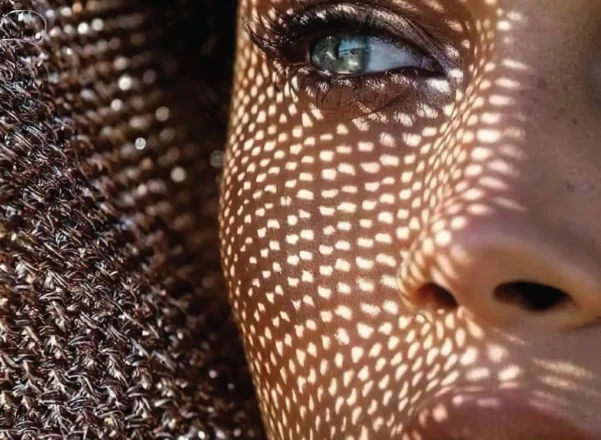
The skin color of each person comes down to an important molecule produced in the body: melanin. Melanin gives your skin, your eyes and your hair their color. The more melanin you have in your skin the darker it will look. In a perfect world, the same amount of melanin would be present in all areas of your body, but in some cases, certain areas can have greater concentrations of melanin than others.
This is called hyperpigmentation.
Hyperpigmentation is a common condition that makes some areas of the skin darker than others. It is a combination of the words “Hyper” meaning more or excess and “pigment” meaning color.
Hyperpigmentation can appear as brown, black, gray, red or pink spots or patches. The spots are sometimes called age spots, sun spots or liver spots.
Age spots are small, flat dark areas on the skin. They vary in size and usually appear on areas exposed to the sun, such as the face, the hands, the shoulders and the arms. They are a sign the skin has received a lot of sun exposure and is attempting to protect itself from more sun damage. They are frequent in people who have lighter skin and are frequently exposed to the sun.
These dark spots are benign and non-painful but they can make people self-conscious and uneasy in their own skin.
There are many factors that could lead to hyperpigmentation:
- Genetics: some people are genetically more prone to develop dark spots
- Skin injuries which cause Post Inflammatory Hyperpigmentation: a type of cutaneous hyperpigmentation occurring after and often during an inflammatory state
- Hormonal imbalance leads to a special type of hyperpigmentation called “melasma”. Melasma is caused by an overproduction of melanin after hormonal changes such as pregnancy, using birth control pills, taking hormone replacement therapy or after sun exposure.
- Sun exposure: one of the roles of melanin is to help protect the skin from the harmful effects of the sun so a longer exposure to the sun’s rays will lead to greater melanin production
- Age: as we age, the melanin-producing cells increase in size and form clusters to create the characteristic dark spots or age spots.
These transformations begin to occur at a young age, most frequently at 40 years of age. However, preventative measures and an adequate treatment are capable of slowing down the formation of liver spots and even treating them once they appear - Diabetes can cause some areas of the skin to look darker
Related Products
How to treat acne-prone skin
- Avoid sun exposure
Although you may be tempted to resort to tanning to hide your skin imperfections, the opposite effect will happen and an acne flare-up will occur at the end of the summer. The sun’s rays have a largely negative effect on acne-prone skin. The sun’s UV rays eliminate the bacteria responsible for acne, which explains why acne disappears at first. But the sun is a double-edged sword because it stimulates the secretion of sebum, the oily substance involved in the process leading to acne. The sun’s rays also cause dryness and thickening of the skin, which are part of the problem of oily skin and will worsen your condition. - Protect your skin
The next step after cleaning your skin is moisturizing it. All skin types can benefit from a good hydration whether they are dry or oily. Ideally, the best time to apply a moisturizer is when the skin is still damp (after showering or cleaning your face) because that will lock in the water on the surface of the skin. - Listen to your skin
Results begin to appear after 4-6 weeks of treatment. Some topical or oral treatments may dry out your skin. You should discuss this concern with your dermatologist, who will help you use an adjunctive treatment to improve your skin’s moisture level. - Cleanse your face
Wash your face with an appropriate soap-free cleanser like BECLEAN that respects the skin’s hydrolipidic film. - Scurb your sebum secretion
Avoid excessive sebum secretion by applying a sebum regulating agent such as BECLEAN MAT, which reduces the amount of sebum on the skin’s surface and acts like a sponge by absorbing excess sebum. - If all else fails, ask the professionals
Consult your dermatologist, doctor or pharmacist to choose the right product for your skin. If, after using a cosmetic product, your condition does not improve or worsens, consult your dermatologist or pharmacist.
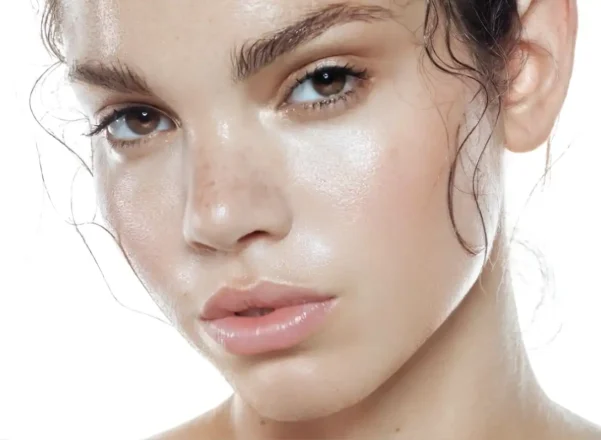
On average, 80% of teenagers both men and women have acne and the condition can persist into adulthood. In some cases, acne can affect newborns due to their mother’s hormones that are present during childbirth. However, this type of acne usually resolves spontaneously. Acne can clear up on its own as individuals begin to transition into adulthood, but it can still occur in adults if not treated.
- Hyperseborrhea
Hyperseborrhea is an excessive production and secretion of sebum caused by the hormonal changes of puberty. Sebum gives the skin a shiny, oily appearance. There is an excess of sebum quantity as well as a change in the chemical composition of sebum that is controlled by these hormones, the person’s diet and environment. The sebum of oily skin is generally thicker than normal sebum and drains with greater difficulty through the pores. This increases the risk of clogging the pores, hence the need for daily cleansing. Using a mild cleansing product intended for oily skin can get rid of excess sebum without drying the skin. After cleaning your skin of excess sebum, you need to avoid sebum packing up the pores again, applying a sebum-regulating product like BECLEAN MAT will help reduce sebum secretion and avoid the issues already mentioned. - Bacterial Proliferation
Sebum is a good nutrient for facial bacteria. With excess sebum, the face becomes a breeding ground for bacteria, including Propionibacterium acnes, which is present on the face in normal quantities, but whose numbers can increase with the abundance of sebum. The increase in the number of these bacteria will lead to inflammation on the surface of the skin and the formation of pimples, comedones and acne pustules. A good measure to avoid this bacterial proliferation is to control and reduce the quantity of sebum from which the bacteria benefit. - Hyperkeratinization
This is the excessive renewal of skin cells that leads to a greater number of dead cells. The massive excretion of skin cells blocks the pores of the follicular canal and prevents the sebum from being secreted on the skin’s surface. In addition, the cellular debris (proteins and lipids) provides more nutrients for bacteria. The blocked pore, which now contains sebum, dead cells and bacteria, will fester and turn first into a papule, then into a pustule. It is therefore necessary to exfoliate the skin to avoid the accumulation of dead cells, which are a source of energy for bacteria and constitute the pore plug. The presence of silica in BECLEAN MAT and silica microbeads in BECLEAN will help exfoliate the skin properly and avoids pore clogging. Even better, silica is a mild abrasive agent which in turn will unclog the pores and reduce the appearance of acne.
In addition to the common causes of acne in both sexes, women are more likely to develop acne as adults than men for the following reasons:
- Genetics
- Smoking, as smokers are more likely to get acne than non-smokers
- Sun exposure
- Medication: oral contraceptives and hormone therapy cause acne to appear
- Use of inappropriate cosmetics: inexpensive cosmetics, occlusive make-up which prevents the skin from breathing
- Hormonal fluctuations: after the age of 30, a late-onset hormonal acne outbreak begins to appear around the jawline and neck in women
- Use of unknown skin irritants: detergents, soaps, perfumes
Acne In Adults
As we age, the skin becomes dry and therefore less oily. However, adult acne can still develop in the form of pustules and comedones. These skin lesions can be treated, but the treatment of adult acne is different from that of adolescent acne.
Related Products
Understanding skin aging
Aging is a natural process that starts around the age of 25-30 and evolves slowly over time. It is marked by the gradual slowing down of the body’s metabolism and affects all the systems and organs of the body, including the largest one, the skin. It should be noted that there are two types of factors that affect aging:
- Intrinsic factors or chronological aging are the consequence of the passage of time, which affects all living organisms and depends on genetic and physiological factors. It can also include pathological factors
- Extrinsic factors are factors related to environmental conditions and the person’s lifestyle. Specific factors include sun exposure, smoking, diet, emotional stress, oxidative stress, pollution and toxic substances to which the skin is subjected to:
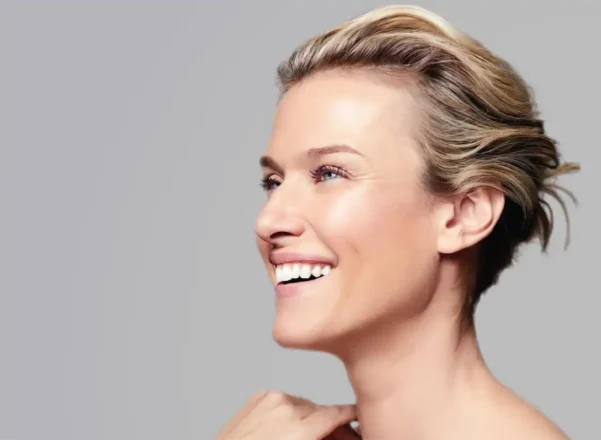
UV radiation is one important factor of extrinsic skin aging. When comparing the areas that are usually exposed to sunlight, such as the face, the neck, the forearms and back of the hands, to the areas that are generally covered, the damage caused by the sun can be apparent. In these areas, skin wrinkles, marks and various UV-induced skin lesions can develop. Resistance to UV aggression varies greatly depending on the phototype. People with light or fair skin tend to age more rapidly than people with dark or matte skin.
The quality and balance of a person’s diet are extremely important. An unbalanced diet cannot provide the necessary tools for tissue defense and regeneration. Hence, it is important to provide the body with vital foods such as water, trace elements, vitamins, proteins, fats rich in omega 3 and omega 6, slow-acting carbohydrates.
Smoking is yet another factor in aging, both through direct smoking and second-hand smoking. Cigarette smoke contains a lot of harmful chemicals emitted through the combustion of tobacco that alter the elastic fibers of the skin and increase the production of free radicals worsening oxidative stress. These chemicals are far worse than nicotine. They enter the bloodstream and act on the vascular level thinning out blood vessels and reducing the nutrition levels of all organs, including the skin. With a lack of nutrients, the skin’s defenses are reduced and the effects of skin aging start to appear. Moreover, the muscle movement related to cigarette smoking accelerates the formation of wrinkles around the lips and the heat generated from tobacco burning will damage the skin cells closest to it.
Related Products
Being in the sun has a lot of benefits however, excessive sun exposure can lead to many harmful consequences for the overall health.

The sun’s rays can have destructive effects on your skin. In fact, short-term consequences of sun exposure are heat stroke, photosensitization, while long-term consequences of sun exposure are skin cancers and skin aging. UVA and UVB rays are responsible for skin cancers because they weaken the skin’s immune defenses. Hence the need to use sunscreens to shield the skin from these aggressions.
Photoprotective products filter both UVA and UVB rays. Their filtering power is defined by the SPF (Sun Protection Factor). This SPF must be chosen according to the phototype and the intensity of the sun’s rays. The most common SPFs available on the market are:
- SPF 30 = high protection
- SPF 50+ = very high protection
Chemical vs mineral filters:
There are two types of filters that block UV rays: chemical filters and mineral sunscreens.
- Chemical filters are chemical molecules that absorb UV rays to prevent the skin from absorbing them. They offer a very effective protection.
- Mineral filters remain on the skin’s surface and reflect UV rays like a mirror. They are also called physical sunscreens. Mineral filters have a powdery texture. They are also suitable for reactive skin, as they are better tolerated by very sensitive skin or skin prone to allergies. Two factors come into play when choosing the right protection against the sun’s rays: your skin type and the intensity of the rays.
Sun protection is essential no matter the skin type
Not all skins react in the same way to sunlight because each individual has his own photosensitivity, characterized by his phototype. The phototype is the skin’s reaction to the exposure to the sun’s rays. The Fitzpatrick scale characterized 6 phototypes according to the skin tone and the reaction of the skin following sun exposure.
- Phototype I, the most sensitive to sun exposure
People who have phototype I skin do not tan or tan very little. With each sun exposure, there is a high risk of sunburn. They should apply a very high SPF index sunscreen (SPF 50+) during the entire day - Phototype II, sensitive
People who have phototype II skin manage to tan slightly but they are at a very high risk of sunburn and should still use a sunscreen of SPF 50 at the beginning of summer till the end of summer - Phototype III, needs protection
People who have this phototype have fair or darker skin, capable of tanning, but are still at risk of sunburn in the first few days. They should start with a sunscreen of SPF 50 during this period and then switch to an SPF 30 once the tan is established - Phototype IV, easy tanning
People who have phototype IV have dark skin, brown hair and rarely get sunburned. The skin tans easily and quickly however, they should be careful about the first exposure the first few days with a SPF 50 sunscreen, then switch to SPF 30 when the tan sets in - Phototype V and VI, good sun protection
People who have these phototypes have a very dark skin type or even black skin, which is naturally very rich in melanin. Sunburns are rare but not impossible. Applying an SPF 50 sun cream for the first couple of days, then switch to SPF 30. Always take care of sensitive areas, such as the nose or ears
- Avoid going outside when the sun’s radiation is most intense. The higher the sun is in the sky, the greater the UV radiation.
- Avoid staying at the beach all day. Never expose your skin to the sun when taking certain medications without asking your dermatologist or pharmacist for advice.
- After exposure: clean and moisturize your skin. Take the time to thoroughly cleanse your skin to remove all traces of sunscreen and the day’s impurities.
- Choose a gentle soap-free cleanser that respects the skin’s natural balance. BECLEAN
- Finish by applying a moisturizing cream HYDRAPLUMP rich in nourishing and repairing active ingredients or an after-sun lotion.
